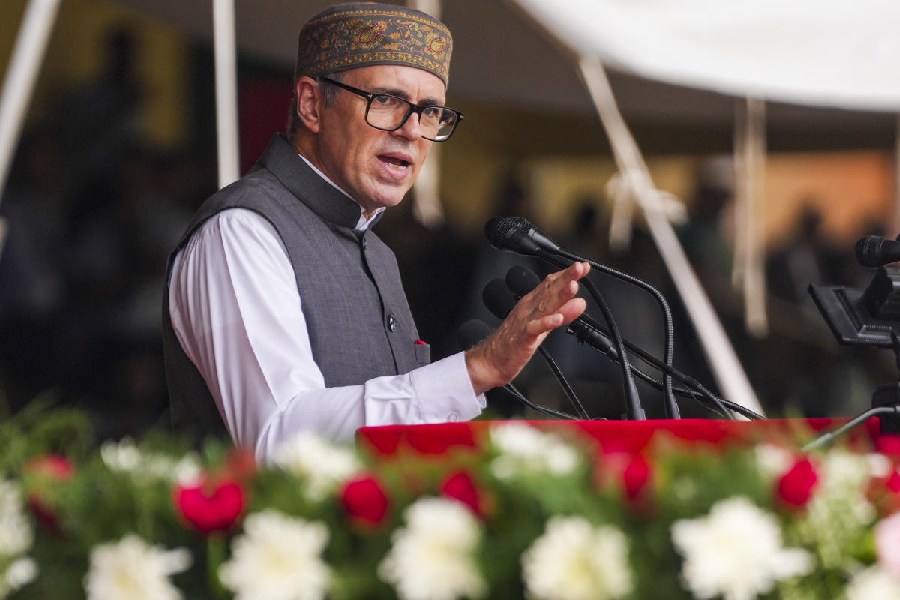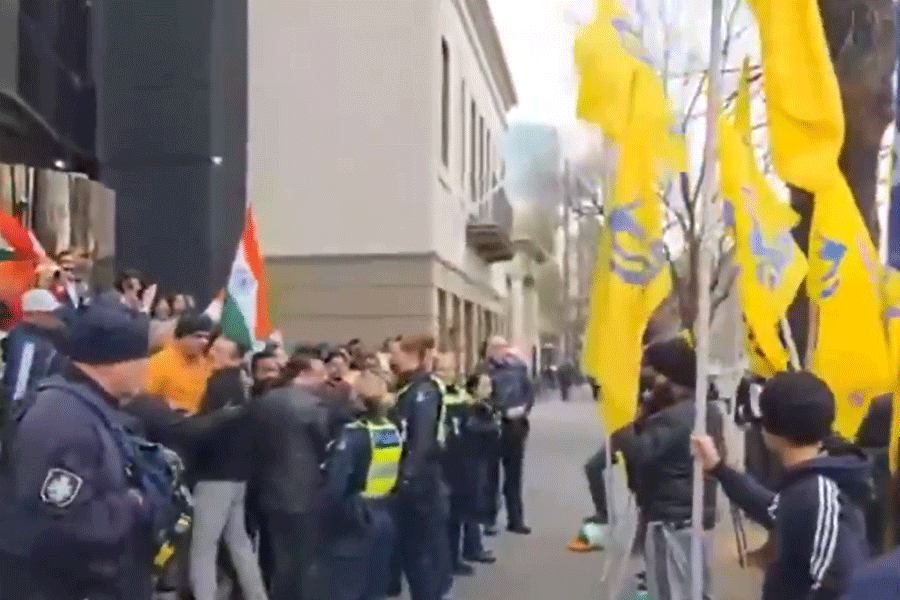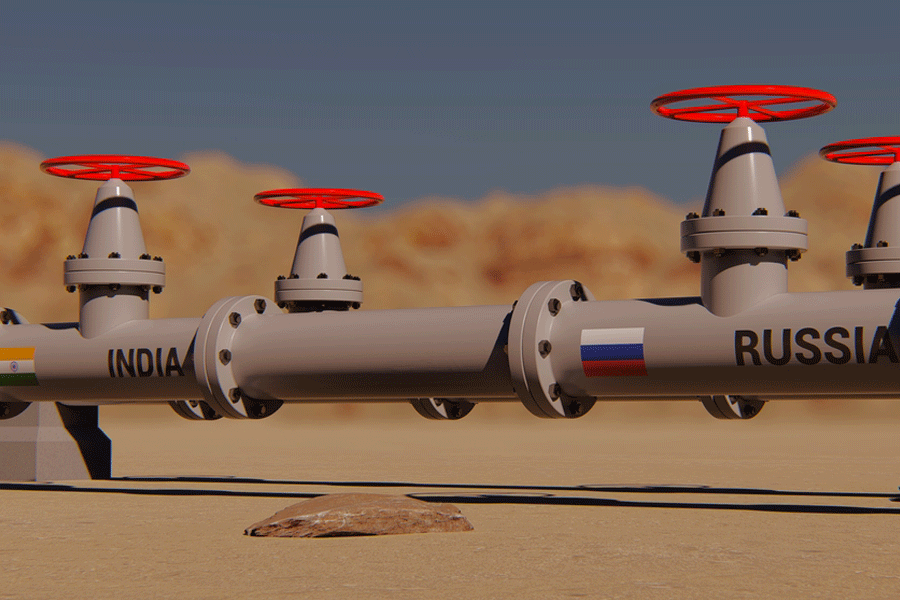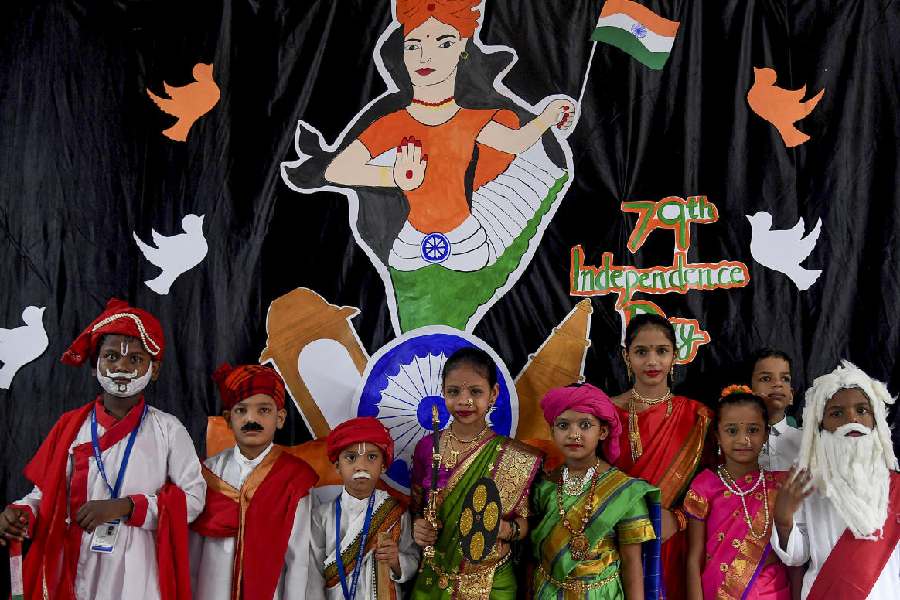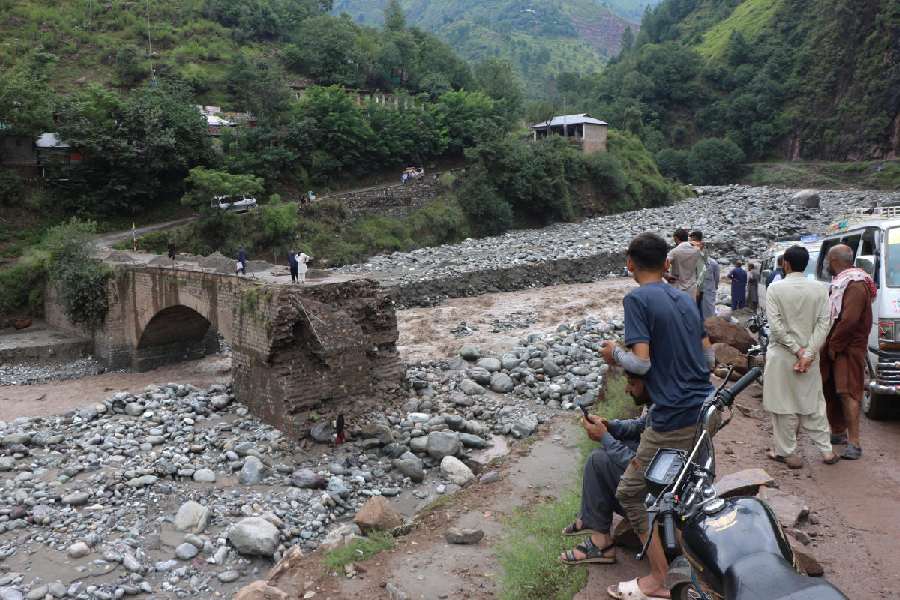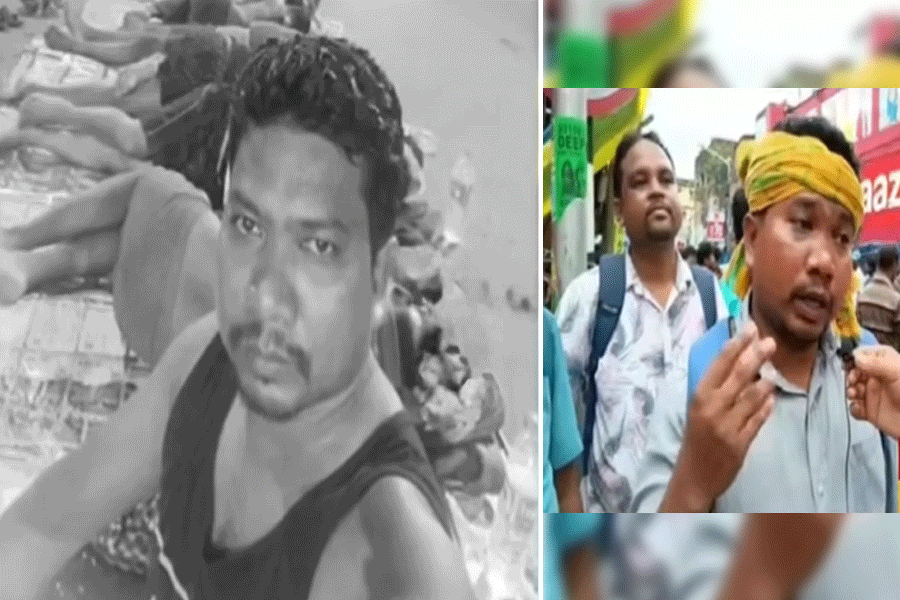 |
 |
 |
 |
| (From top): Shoppers at Independence Square, Scarlet Ibis at the Emperor Valley Zoo, Maracas Beach and a view of Queen’s Park Savannah |
Where from India may you be maan ?” asked the cabbie as he steered the gleaming PT Cruiser into a crowded street in Port-of-Spain, the capital of Trinidad and Tobago. His name was Rampersaud, a third generation Indian, whose family had only misty memories of the sub-continent. Rampersaud had a soft corner for India but didn’t mince his words when it came to our national sport. “You had a very good cricket team, maan, but sorry to say, it is on the downslide now”. Well, ahem...
I was on a business trip to the Caribbean but my secretary, kind lady that she is, managed to juggle my itinerary and squeeze in a weekend of sightseeing. So, after a business meeting on Saturday morning, I was the monarch of the island, free to roam to my heart’s content.
Still, it was a time for choices. I’d heard lots about Tobago from friends at home but figured I didn’t have time for the journey from Trinidad. So, I decided to concentrate on Port-of-Spain and the countryside around it.
That suited Rampersaud fine and we headed to the Queen’s Park Savannah, a grassy expanse that surrounds Port-of-Spain’s uptown, framed in the north by the foothills of the Northern Range. It includes landmarks like the Trini Posse Stand and the Queen’s Park Oval, the scene of many cricketing battles. (By now, the portly Rampersaud had accepted a new dual role as driver and guide).
The Queen’s Park Savannah is Port-of-Spain’s largest open space (it was once a sugar plantation). It is crisscrossed by paths and shaded by the branches of old samaan trees. The Savannah comes to life after four in the afternoon with cricket and football games, joggers, couples and families taking an early evening stroll and stopping over at the roadside stalls serving up roasted corn, bake and shark, phulouri and rotis.
With so many young men racing up to the wicket, swinging their arms wildly, Queen’s Park Savannah resembled Mumbai’s Shivaji Park on a Sunday morning. I had expected strapping lads running in menacingly at top speed towards the stumps but I was confronted with friendly, spectacled blokes bowling left arms over.
Trinidad has a strong Indian connection. Indian Arrival Day, on May 30, commemorates the arrival of the first Indian indentured labourers from India to Trinidad, in May 1845, on the ship Fatel Razack. The descendants of the Indian immigrants now constitute over 42 per cent of Trinidad’s population while the descendants of African slaves constitute 41 per cent.
The Indian connection is evident in scores of ways. For a start, there are the culinary traditions of modern day Trini. Rotis in Trinidad are like hamburgers in the USA. The island’s unofficial national dish is a curry meal wrapped in thin pastry. Connoisseurs don’t think much about going all the way to San Juan, a suburb of Port-of-Spain, to sample the delicacies served up by Siriam Patr?j, Trinidad’s roti king. The restaurant was a modest establishment but a steady crowd testified to its popularity. I sat and ate while scores of people came and went at the takeaway counter.
Indians might find the menu a bit confusing. Sada Roti is served as a side dish. Bussup Shot resembles a cut up pizza, and the Dhalpouri is filled with ground, split chickpeas. There are different curry fillings to choose from: shrimp, chicken, beef, lamb, mango, pumpkin or capsicum in any combination, mixed with potatoes.
Then there is the phulourie ? small, deep-fried balls stuffed with ground split peas. The name’s all that is Indian about it. It, like the roti, is unique to Trinidad.
Back in the heart of town, I found myself at the top end of Frederick Street, in the imposing, gabled National Museum & Art Gallery. The museum’s collection covers an eclectic mix of everything from early Amerindian history and the technology of the oil industry to a collection of works by local artists.
One of the grandest of the many mansions surrounding the Queen’s Park Savannah is the ornate Knowsley Building. It resembles a fantasy doll’s house. North of Queen’s Park West on Maraval Road is a group of mansions, the Magnificent Seven, a magic-realist parade of European architectural styles with a tropical flavour.
After doing a quick trip ? by taxi and on foot ? of the most important parts of town, Rampersaud and I headed to the northern side of the Savannah to the Emperor Valley Zoo, whose collection of animals is perhaps the most extensive in the Caribbean. Among the birds and animals were the Brocket Deer, quenk, ocelots, Spectacled Caiman and parrots, toucans and Scarlet Ibis.
Next to the zoo are the Botanical Gardens, home to one of the oldest collections of exotic plants and trees in the western hemisphere.
Dating back to the 1780s, Port-of-Spain’s downtown area is the oldest part of the city as well as the capital’s shopping and financial centre. Frederick Street is Port-of-Spain’s main shopping area, crammed with clothes and souvenir shops as well as street vendors selling homemade jewellery, belts, cassettes and knick-knacks. Nearby are the Promenade (now renamed the Brian Lara Promenade) and Independence Square, the heart of downtown Port-of-Spain.
Then, there’s the pretty, tree-shaded Woodford Square which provides a pleasant space to escape the crowds and listen to local orators at the equivalent of Hyde Park’s Speakers’ Corner. Crowds had gathered around each speaker. One Rastafarian was holding forth and his efforts had the crowds giggling for one reason or another.
Where, I asked myself, among these landmarks could Naipaul’s Miguel Street have been, if indeed there had been a Miguel Street? Sadly, I haven’t found the answer to that one yet.
Next morning, we headed north to Maracas Bay via a road that climbed gentle-sloping hills covered with greenery as far as the eye could see.
Maracas Beach, the most popular beach in the North, is a 45-minute drive from Port-of-Spain. The beach is about 2km long and has off-white sand. The greenish blue sea was very calm with waves no more than a metre high and ideal for surfing.
I didn’t stop to test the waters but had ‘bake & shark’, the local speciality, made on the pits at the beachside stalls. It consists of a fried shark fillet in a kind of giant doughnut ? the Trinidadian version of fish & chips.
Driving on further on the hill above the bay, there’s a restaurant and bar which offers a panoramic view of the green mountains and the tranquil bay. The Timberline Nature Resort provides accommodation and tours in the area.
East of Maracas Bay is Tyrico Bay with a 900m long beach with grayish brown sand. Like Maracas, it offers good sea and sun bathing. Approximately 8km east of Tyrico is another popular beach at Las Cuevas Bay. The name Las Cuevas is derived from the Spanish word for caves since there are many caves on this beach. This bay is more sheltered and calmer than Maracas.
Wa-oo-oo, wa-oo-oo,
Wa-oo wa-oo wa-oo wa-ay...
Sittin’ by de ocean,
Me heart, she feel so sad...
Don’t got de money
To take me back to Trinidad.
But Trinidad too is moving with the times ? for better or for worse. Rampersaud lamented that young Trinidadians do not listen to Reggae or Calypso anymore. Even steel bands are pass?. Eminem seemed to be the gospel of the new generation (going by Rampersaud junior’s musical inclination anyway).
As I parted company with Rampersaud, he insisted I should come back during the Carnival (“You wouldn’t recognise Port-of-Spain. It is so different then”). After the emancipation of slaves in the 1830s, the Carnival emerged and became a sign of liberation, an event marked by dancing, singing, drinking and revelry. Over time, this holiday (Feb-March) coined its own music (Calypso in the 19th century, steel bands in the 20th), created its own f?tes, contests and parades.
Perhaps I will return to Trinidad again (I want to). Perhaps during Carnival too. But this first impression will remain with me.
P.S. And did I mention the bottles of white rum from the duty free at Port-of-Spain’s Airport?
Low-cost breaks
 |
 |
| Tourists soak in the sights at Durbar Square in Bakhtapur and (top) the entrance to the famed Boudhnath stupa in Kathmandu |
It’s a dilemma for Indian travellers: Kathmandu is just right for a quick and inexpensive holiday. But it also has pollution, touts and poverty, coupled with travel warnings because of the undeclared civil war between the government and Maoists.
But Indian travellers aren’t easily deterred. That shows in the Nepal Tourism Board (NTB) statistics. The number of Indians travelling to Nepal shot up by 16.4 per cent in August, while the number of non-Indian arrivals declined by 6.6 per cent.
There are plenty of reasons why Indians are still travelling in huge numbers to Kathmandu. Not only are great discounts available, but there are more flights than ever and they are cheaper. In fact, you can get a one-way air ticket from Delhi to Kathmandu for as low as Rs 2,200.
“Prices have come down to an unprecedented level if compared to the earlier times when there was monopoly of national flag carriers of both countries. Due to the surge in seats capacity, a healthy competition in service delivery and price has emerged,” says NTB chief T B Dangi.
According to Dangi, 50 per cent of Indian visitors who arrived by air were ‘package tourists’ and mostly came under casino packages.
Most think of Kathmandu as the swinging town of the ‘60s and ‘70s that became the last frontier for hippiedom. Today, though, with four casinos, it can claim to be the casino capital of south Asia. Casino Anna is located in the Hotel de L’Annapurna, Casino Nepal in the Holiday Inn Crowne Plaza Soaltee, Casino Royale in the Hotel Yak & Yeti and Casino Times at the Everest Hotel. The Casino Nepal even provides free rides back to all the major city hotels post 8pm.
Casino packages offer you a great deal. You get free meals at the casino’s restaurants, bar facilities, free airport transfers, private gaming areas, access to health clubs, swimming pools and tennis courts. The minimum age to gamble is 21 years, so carry your ID card if you want to try your hand at Baccarat, Blackjack or Roulette.
A two-day, three-night package at Hotel Yak and Yeti under a casino package costs merely Rs 2,999 per person on twin-sharing basis. And besides usual incentives, there are Rs 1,000 worth of coupons at the Royale Casino. However, if you don’t step inside the casino, the hotel will charge for lunch and dinner.
Visitors to Kathmandu have one warning for people who don’t much care for gambling. Kathmandu’s nightlife is almost non-existent. “I was visiting Kathmandu with friends. But we were warned not to venture out of the hotel after 9pm. But that’s okay because you can spend your time at the casinos,” says Ravi Taneja, a media person.
Even the hotels individually have attractive packages on the cards (for those not casino-bound). The Hotel Yak and Yeti (5-star) offers winter packages of Rs 4,999 per person (twin sharing) for three nights in a standard room. That includes complimentary add-ons like the buffet breakfast and more. “The rates have fallen since last year, almost by Rs 1,000,” says Paras Thapa, reservation official at the hotel.
The five-star hotel Soaltee Crowne Plaza offers a popular ‘Kathmandu Surprise’ package. Says marketing manager Sarad Upadhya, “It’s a kind of casino package. For a three night and four day stay, the price is Rs 7,999 per person on twin-sharing.” The incentives include shopping vouchers, free meals, sightseeing plus Rs 1,000 worth of casino coupons.
A stay at the 4-star Hotel Shangri-la in Kathmandu will set you back by Rs 2,200 for a single room and Rs 2,500 for a double room, excluding taxes. But these are the rates for the peak season starting October till March. In the off-season, the rates can get as cheap as Rs 1,600-Rs 1,800.
The city is easily accessible with six airlines — Royal Nepal Airlines, Indian Airlines, Cosmic Airlines, Jet Airways, Air Sahara and Druk Air — flying and to and fro between Delhi and Kathmandu. “There are daily flights. Plus the prices of air fares and accommodation have come down,” says Diwakar Rana, an official with the Nepal Tourism Board.
| SAFETY TIPS |
| • Register with the local police or concerned embassy or consulate as soon as you arrive • Use government registered travel and trekking agencies only • Carry certified copies of documents and leave the originals and other valuables in the hotel safe deposit box • Carry only travellers’ cheques and limited amounts of cash |
The airlines too have tied up with hotels to offer packages for the traveller. Air Sahara, which flies once daily has tie-ups with four 5-star hotels and a 4-star hotel in Kathmandu. Teaming up with the Soaltee Crowne Plaza Hotel, it offers a Rs 9,000 three-day package per person on twin-sharing basis including air fares. Airport transfers, all meals and casino coupons are all on the hotel.
Then, there’s Cosmic Air an airline which flies twice daily from Delhi to Kathmandu. It offers Rs 7,500 per person on twin-sharing basis in tie-ups with Hotels Everest and Annapurna. And a higher rate at the Hyatt which is Rs 8,000 plus taxes. The incentives are airport transfers, all meals free, casino coupons and sightseeing around town.
And a piece of good news. When you are travelling to Kathmandu, they don’t ask you for a visa or a passport.
Budget travellers can take the land route. From Delhi, a bus takes you to the Sanauli border in UP. The alternative border point is Raxaul, Bihar.
For some, Kathmandu evokes the image of the starting point for trekkers to head for the mountains. Some make a beeline for the famed Pashupatinath temple and the Boudhnath stupa or you can check out Thamel, Kathmandu’s tourist district. If you long for adventurous activities like mountain biking and rafting, visit Patan and Bakhtapur. The NTB also speaks of new tourism places such as Maipokhari, Antu Danda, Sidhi Thumka, Gajur, Mukhi, Pathibhara, Mai Beni Kanyam and Fikkal Bazaar.
My favourite holiday
 |
Mandira Bedi,
actress/cricket-commentator
My favourite holiday spot is South Africa. I love Cape Town the best for it has something for everyone. There is scuba diving, bungee jumping for the adventurous, shopping bonanzas for the shopaholic, world cuisine for the foodie, and safaris for the wildlife lover. Cable Mountains is one of the most stunning sights in South Africa. It was the backdrop for one of our studios, so I went to take a look at it. From one end of it you could see the whole of Cape Town. Also I had a unique private safari park experience. The rooms were situated around a watering hole where wild animals would come for a drink. There was a shower facility outside each room. The experience was like taking a bath in the wild. I even took a hot balloon ride which afforded a bird’s eye view of the jungle. As tradition dictates, we popped champagne at the end
Route map
• Madhya Pradesh likes to advertise itself as the unknown heart of India. But, unknown or not, it has an amazing choice of tourist destinations — from ancient sites like Khajuraho to nature parks like Bandhavgarh.
So, if you’re planning to blow up your hard-earned Puja bonus on a much-deserved holiday, this is as good a destination as any. To help you along, Zenith Holiday has lined up a low-cost 13-day package to this fascinating state. The packages are priced at Rs 13,500 per person for high-end accommodation and Rs 8,250 per person for cheaper hotels. The trip covers tourist hotspots like Bandhavgarh, Satna, Jabalpur, Panchmari with sightseeing to Khajuraho, the Jabalpur Marble Rocks and more thrown in. The cost includes all meals, inter-hotel transfers and sightseeing, though travel is extra. For details, call: 2281 1460.
• ITC’s WelcomHeritage is ringing in the festive season — till the end of March 2006 — with attractive packages for two. You can celebrate the season at its hotels that come with dollops of old world charm. The offer of the month from the chain comes from WelcomHeritage Windamere Darjeeling. Guests can avail of a 20 per cent discount on standard rooms on its two-night, three-day package for two that is priced at Rs 11,999. All meals are included in this deal. An extra bed for a child comes at Rs 1,200 per night.
WelcomHeritage is also offering two-night, three-day packages (for a couple) at other properties. Choose between the resort spa WelcomHeritage Ranjit Svaasa in Amritsar (Rs 7,499), or head for WelcomHeritage Kanha Jungle Lodge (Rs 5,499) if seeking adventure. Other destinations are WelcomHeritage Fort Amla near Ujjain (Rs 4,199) and WelcomHeritage Connaught House in Mount Abu (Rs 4,999). All meals are included.


